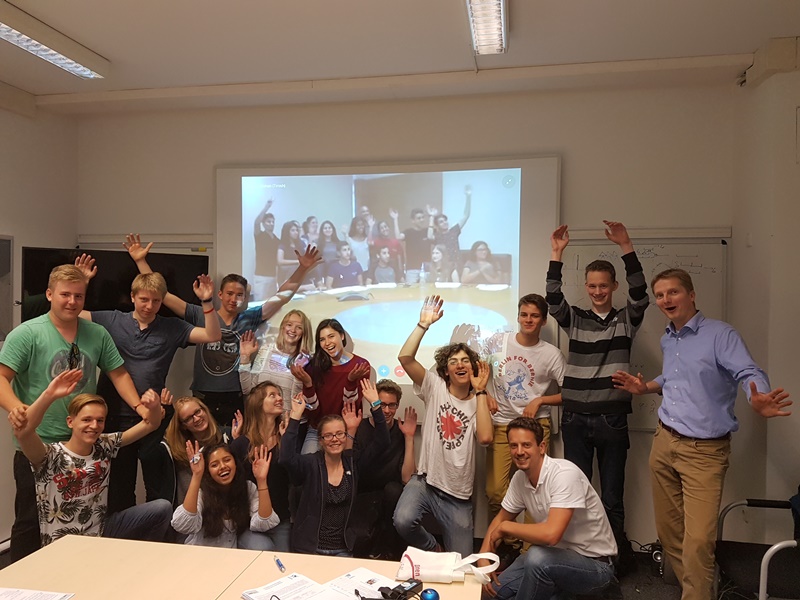After two months of collaboration, the joint remote sensing project of the DLR_School_Lab of the German Aerospace Center (DLR) in Oberpfaffenhofen, the Kurt-Huber-Gymnasium in Gräfelfing and BGU's Earth and Planetary Image Facility (EPIF) has come to a successful close. Using special cameras, the students had to take infrared false color images of their home country, which had to be analyzed by the pupils of the other country. During a last joint video conference, the 30 students did not just exchange their results, but also their experiences during the scientific project.
After being assigned the task at the beginning of April, both groups were in action all around Munich and Beer-Sheva to perform the measurements for their remote sensing project in addition to all their normal school activities. The biggest challenge for the German students was not the use of the technical equipment – that challenge they met quite easily. Once again it was the weather above Germany, which was totally unpredictable. A problem “real” scientists have to deal with as well. Optical remote sensing of the environment is useless during rain at least in the chosen spectral range of the visible light and the near infrared. But the students managed to overcome this problem with a lot of persistence.
The young natural scientists from Gräfelfing had split into four groups according to topic: urban areas, lakesides, agricultural land and alpine region. After choosing their preferred measurement area, the teens met up with scientists on-site to perform their measurements. The students had modified digital cameras so that they could take infrared images with them. These cameras were installed on a quadrocopter, together with a reference camera, in order to take pictures from high altitudes. For the Alps-group the acquisition of their data was laborious: After several unsatisfactory attempts in the mountains around Oberammergau, they finally achieved successful results after a climb up the 1683 meter high Brecherspitze.
On the Israeli site, weather was no problem. The region around the Negev desert is – not surprising – one with low precipitation. The bigger challenge was to find naturally grown or planted vegetation in this very arid region. The students decided to use two naturally growing tree species as their research objects. The first species was Tamarisk, which can grow to an almost biblical age of several thousand years. The second are pine trees, which grow in the Goral Hills north of Beer-Sheva, and are the only species that can be found both in the desert and the alpine area. Furthermore, a jojoba farm south-east of the city was examined by another group.
Finally all groups managed to complete the task: to get vegetation images of especially interesting sceneries in their particular region, to analyze them and document their work.
After the thorough analyses of the raw data, the students had to digitally rework the infrared pictures to get NDVI-images. ‘Normalized Differenced Vegetation Index’ is one of the most important vegetation indices used for remote sensing. On the reworked pictures vital vegetation stands out from the lifeless subsoil, which allows surface classifications. The students exchanged those data material with their respective partners on both sides and discussed the results during the final conference.
What the students from Gräfelfing’s Kurt-Huber-Gymnasium liked most during this unusual student project was: “The cooperation with the partners from Israel!” The Israeli students were completely delighted by their exciting mission as well, and happy about the good cooperation. So the Hebrew farewell Lehitraot ‘See you next year!’ can be taken literally this time. Both project leaders decided to repeat this campaign, which was exceptional in so many ways.
The project was the result of an initiative of BGU's Dr. Shimrit Maman. The project idea and concept was developed by Tobias Schüttler by the DLR_School_Lab in close cooperation with Dr. Maman. Alongside the desire to connect German and Israeli teenagers and scientists, the project has been used to examine didactic methods and new educational content for physics teaching. The Israeli students were mentored by Sivan Isaacson and Aviv Lee Cohen of the Department of Geography and Environmental Sciences. 
Pictured above: The German students in the forefront with the Israeli students behind them on the screen.
